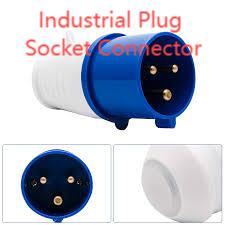In many production environments the integration of a Industrial Plug Socket Connector provides seamless power delivery even under extreme stress, ensuring uptime and worker safety.
Assessing Voltage and Current Needs
Selecting an appropriate connector starts with accurately profiling the electrical demands of each machine. Technicians calculate peak and continuous current loads, factoring in inrush currents from motors and heater elements. By matching these values to a connector’s rated capacity, facilities prevent overheating and premature wear. Additionally, voltage compatibility checks—especially in multi-voltage installations—guarantee that phase configurations and grounding systems work harmoniously, minimizing the risk of electrical faults.
Environmental Protection Ratings
Industrial settings often expose connectors to dust, moisture, chemicals, and mechanical impact. Ratings such as IP67 or NEMA 4X classify the level of protection against ingress and corrosion. High-performance housings crafted from UV-stabilized polymers or marine-grade stainless steel resist harsh chemicals and ultraviolet degradation. Consulting datasheets for temperature tolerances and seal longevity under repeated mating cycles helps maintenance teams establish replacement intervals before failures occur.
ABB’s Innovative Connector Range
When reliability matters, many engineers turn to ABB’s catalog for modular, color-coded connectors that streamline installation and inspection. Their solutions include snap-lock mechanisms for rapid engagement and clear visual indicators confirming secure mating. Advanced variants feature quick-release handles and captive sealing rings, maintaining IP66/67 ratings even after hundreds of operations. ABB’s global support network also offers custom configurations, ensuring compatibility with legacy equipment and emerging smart-factory architectures.
Installation and Maintenance Protocols
Proper mounting and routine inspections extend connector lifespan substantially. Mounting panels should be free of burrs and equipped with vibration-damping grommets to prevent fatigue cracks. Installers must torque coupling rings to manufacturer specifications and apply dielectric grease sparingly on contact surfaces to inhibit oxidation. Scheduled maintenance checks include verifying seal integrity, cleaning mating faces with isopropyl alcohol, and ensuring cables are strain-relieved to avoid stress at the termination point.
Future-Proofing Power Systems
As factories embrace Industry 4.0, connectors are evolving to include embedded sensors that monitor temperature, load, and connection status in real time. Integration with SCADA systems enables predictive maintenance alerts before a connector reaches critical thresholds. Plug-and-play modules also allow rapid reconfiguration of production lines to accommodate new product runs. By choosing architectures that support these innovations, facilities safeguard their investments and maintain competitive agility in fast-changing markets.
For more detailed specifications and ordering information, visit www.nante.com.

